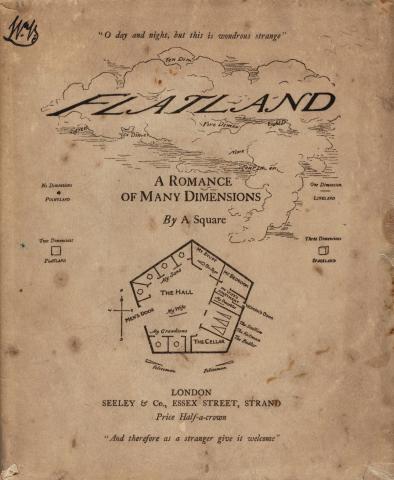Flatland was published in 1884 by Edwin Abbot Abbot. The tale focuses on a square living in a 2D world, completely oblivious that there are dimensions other than his own. The first half of the book describes the square's world in very vivid details,. From class rankings to precipitation, the square describes as many aspects of the 2D world as possible. Some details are quite obvious, but other seemingly innocuous details give you an "I had never thought of it that way" moment.
Half of the entire book focused on a single 2D world seems like a lot, but it stays interesting and is necessary to understand the square's thought process.
When the sphere first appeared, I found myself very excited. I was filled with anticipation on what could unfold. The author gives a perfect description of how the square sees the sphere in his 2D world. It just appears, out of thin (haha a 2D pun) air, as most likely a 4D object would appear in our world.
The sphere eventually convinces (after a long battle) the square that his world is just another dimension by lifting him out of Flatland, turning him so he could see the world directly in front of him (like looking perpendicular to a flat piece of paper). After being convinced of this new dimension, the square's incredible ambition shines brightly as he begs the sphere to take him to other dimensions.
My Rating
Overall I would rate the book a 4 out 5. It was very entertaining and somewhat educational. If you are unfamiliar with the idea of the 4th dimension, this book will serve to educate you. It uses very good examples in attempt to describe how the 4th dimension would work.
A 2D object's sides are made up of 1D objects. A square has 4 lines as sides.
A 3D object's sides are made up of 2D objects. A cube has 6 squares as sides.
So a 4D object's sides are made up of 3D objects. A tesseract's has 8 cubes as sides.
And perhaps a 5D object is made up of 10 tesseracts!
Though many would argue that time is possibly the 4th dimension with no physical attributes and the theory of relativity helps describe how time as a dimension can be manipulated by mass. This is a little out of the scope of the book (and before the theory of relativity was proposed). Nonetheless, Flatland is a fun book that will have you thinking about multiple dimensions.

Add new comment